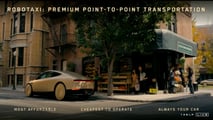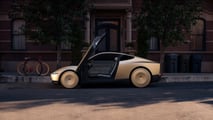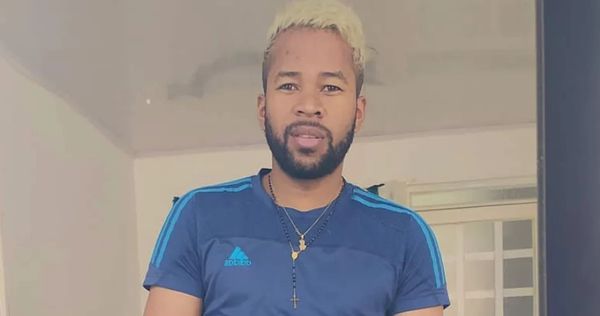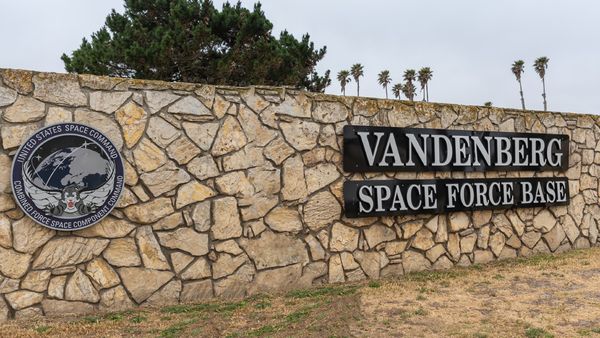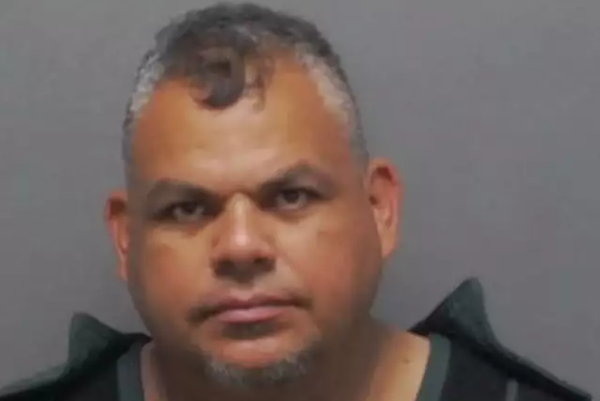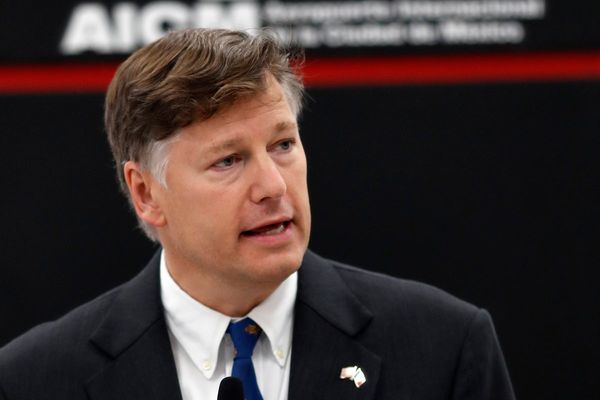
- Tesla's vision of driverless transportation revolves around a robotaxi vehicle it unveiled in Los Angeles on Thursday.
- CEO Elon Musk has shifted Tesla's focus to AI, robotics and this concept of a robotaxi.
- There are still hurdles to overcome before the robotaxi can hit public roads.
Tesla's much-hyped robotaxi is finally here. The automaker unveiled the Cybercab at a splashy event in Los Angeles on Thursday.
At the start of the We, Robot event, Tesla CEO Elon Musk hopped into a shiny, futuristic-looking vehicle with butterfly doors that then whisked him to the stage. Musk later said Tesla expects to start producing the Cybercab "before 2027" and that it will be available for purchase for less than $30,000.

The Cybercab Tesla showed has sleek light bars in front and rear that are reminiscent of the Cybertruck pickup, along with deep-dish rims. It lacks side-view mirrors and visible door handles. Inside, the vehicle has two seats and no steering wheel or pedals. Tesla showed off a minimalist interior similar to that of the Tesla Model 3 and Model Y, complete with a large centrally mounted touchscreen.

Tesla would have to work with U.S. safety regulators to get such a vehicle approved for public roads. Or the final product would have to abide by federal motor vehicle safety standards by adding in side mirrors and other required design elements.
Tesla's CEO said he envisions fleet operators buying Cybercabs and operating them, much like some people do today on the Uber or Lyft platforms. The vehicle has no plug, like other EVs have. Instead, Musk said it features inductive—or wireless—charging. In theory, that would ensure it can charge without human assistance more easily. Likewise, Tesla teased how Cybercabs could be maintained between rides. It showed clips of robots—not humanoid Optimus bots, though—vacuuming the Cybercab's seats and cleaning its screen.

Other than that, Tesla didn't reveal new details about the business it envisions to create around the robotaxi. It also didn't reveal key technical specifications, like the vehicle's range, battery size or charging speeds.
Musk said that Tesla brought 20 of them to the event that would be available to ferry audience members around the Warner Bros. lot where the presentation took place. However, creating a demonstration vehicle that can operate in a highly constrained and controlled area isn't the same as delivering a driverless car that can navigate a city. Tesla still has yet to prove that its technology can reliably operate autonomously in a public setting, and showing off a sleek prototype doesn't change that.

Musk believes that the company's future mainly hinges on artificial intelligence and robotics—not just selling electric vehicles. Self-driving cars, including Tesla owners' personal vehicles and this purpose-built robotaxi, are central to that vision. However, after a decade of ambitious promises and timelines around autonomous driving, Musk has failed to deliver.

Tesla's Full Self-Driving system, which has been available to Tesla customers for years and has received consistent software updates, still does not live up to its branding and requires constant driver supervision. So Tesla has its work cut out for it if it wants to deploy the Cybercab to public roads. That would require extensive testing and setting up the infrastructure to support a robotaxi network, neither of which Musk addressed during the event.
Meanwhile, other companies have beat Tesla to the punch by taking a different technological approach. Alphabet's Waymo, most notably, has driverless Jaguar taxis on the road today in four U.S. cities: San Francisco, Los Angeles, Austin and Phoenix.

First up for Tesla will be getting its Full Self-Driving tech to a point where it can navigate streets unsupervised. Musk on Thursday once again said that's happening soon. On Thursday, he said that cars in Tesla's current fleet would gain unsupervised autonomous capability in 2025 in California and Texas, two of the states with regulatory frameworks governing driverless vehicles.
Gallery: Tesla Cybercab
